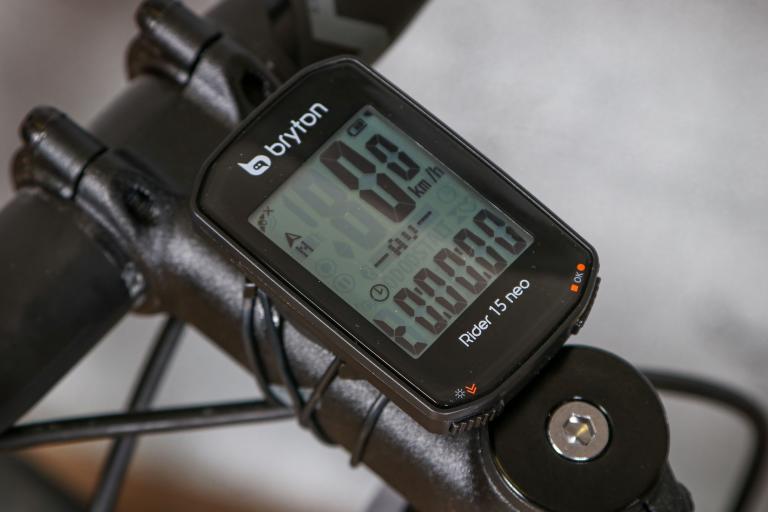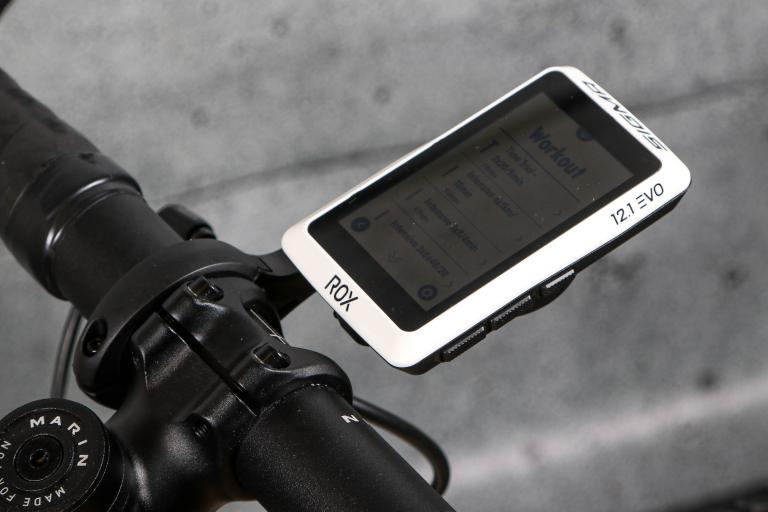Cycling computers, particularly those that have GPS technology, have helped to open up a wide range of possibilities and change with regards to recording, planning and comparing bike rides. The best cycling computers can really enhance your riding experience, which is why a good one is nowadays considered essential by any cyclist who isn't just using their bike to nip to the shops.

Best cycling computer overall: Hammerhead Karoo 3

Best money-no-object cycling computer: Garmin Edge 1050

Best cycling computer for customisation : Wahoo Elemnt Bolt

Best cycling computer for navigation: Garmin Edge Explore 2

Cheapest road.cc-recommended bike computer with GPS: Coospo BC107 GPS Bike Computer

A great Garmin alternative: Bryton S500E GPS Cycle Computer
Cycling computers can also make following a route easier and hassle-free, thanks to bigger, more visible colour screens. With the ability to connect and customise data screens from smartphone apps, and also share with your favourite third-party apps like Strava, it’s made a once tricky piece of equipment far more user-friendly and customisable. Not only that, but in recent times the battery life of these gadgets has rapidly improved, meaning some more deluxe units will run for pretty much a full day before needing a recharge.
Given everyone rides a bike for a different reason, different riders will therefore need a cycling computer to match both their individual riding needs as well as budget. It means that cycling computers can be a rather controversial category, because one person's dream computer could have a missing feature (or one that is sub-optimal) that another cyclist may find is a fatal flaw. That's why we've picked our recommended computers based off numerous different metrics, so you can check over the specs and read the full reviews to inform your choice... if you find navigation absolutely essential, it's no use opting for a cheap unit that doesn't offer this at all!
Most bike computers cost in the hundreds of pounds, which is a pretty significant purchase; however, pretty much all road.cc staffers and, we suspect, the majority of cyclists would agree that it will be a very worthwhile investment to invest a little more and opt for a GPS-equipped computer. That said, if you really don't feel like you need to record your rides and analyse the data, or just want to track your heart rate to make sure you're keeping within your zones, then you can always check out our guides to the best cheap cycling computers and best heart rate monitors.
How we review cycling computers
We believe that products should be reviewed by their target customers here at road.cc, so when it comes to bike computers, we only send them to reviewers who would otherwise consider buying one. To clarify, that means a reviewer who only wants a computer for basic features and wouldn't dream of spending hundreds of pounds on one won't be getting to review a top-of-the-range flagship GPS device!
We'll rate computers on quality of construction, durability, performance, ease of use and value. With almost all bike computers being GPS-enabled nowadays, it's also important to ensure they're accurate, so reviewers will always check the data against another unit they know to be reliable during the test period. That test period is always at least a month, so you know when you get a road.cc recommendation, it's not based off an hour or so of fiddling with the settings. We take computers out in all conditions, and try to use as many of the settings as possible to arrive at our final verdicts.
Why you can trust us
road.cc buyer's guides only ever include products that are rated as at least 'good', although most of the bike computers in this guide have 4/5 stars or more, indicating a 'very good' or 'excellent' score - some have also scooped road.cc Recommends awards, the section of the site where you'll find all our very top-scoring products.
The long and short of it is that we won't include a cycling computer that has scored average or lower in its full review, regardless of how popular it is or any other external forces. If we don't like it, it ain't going in.
Our reviewers are all experienced riders, as are the staff who write these guides, so you can be sure you're getting genuine advice and proper recommendations, not round-ups devised based on what will make us a commission or AI-generated drivel.
Hopefully there is something for everyone in our picks below to suit all budgets! You'll find our overall top six first, followed by plenty more recommendations and finally, some extra handy buying advice.




















Add new comment
3 comments
Just come back from a loaded camping tour in the mountains in France. Garmin Forerunner 955 solar either on my wrist, or strapped to the handlebars using a Decathlon rubber watch mount and chest strap HRM, alongside an old wired cycle "computer" for basic live speed and distance data. It worked fine. After my longest day of riding with navigation on the watch I still had 30% battery left, and the 955 could seemingly be fully recharged daily from a powerbank without making any obvious difference to the juice left in the powerbank.
Plenty of sports watches can do almost everything that dedicated head units do, plua a load of other things, such as tracking steps, stairs, sleep, running, swimming skiing, strength training, 24hr HRV, tell the time etc. The 955 doesn't do MTB cycling metrics but that's about it.
So it would have been worth including one or two in this review.
Karoo 2 doesn't play with Shimano electronic groupsets (or it certainly stopped doing so) and I found battery life wasn't great either.
Has the 3 resolved either or both of these?
Karoo2 did work with shimano through 3rd party app but Karoo 3 does not. It is a shame not to say it like it was the best cycling computer which it isn't. Not to mention many other flaws which users have requested for years and the frequent updates brought nothing.